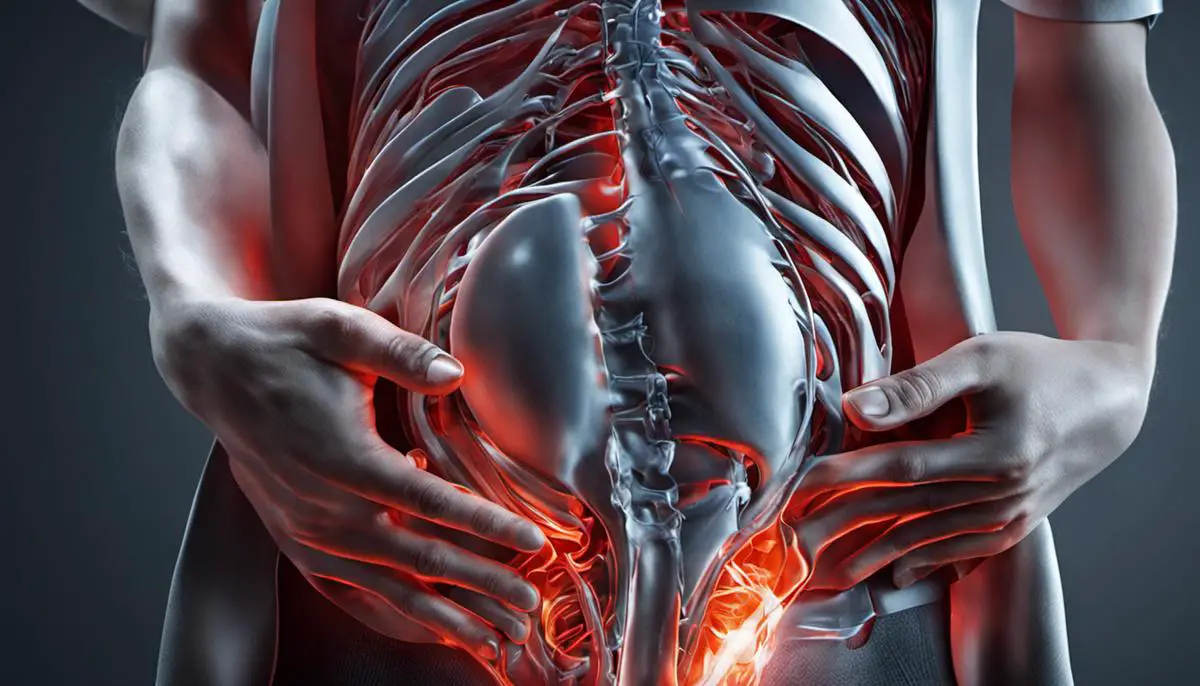Understanding medical conditions and their associated treatment options are pivotal to making informed decisions about healthcare. Bladder Pain Syndrome, a chronic condition characterized by discomfort or pain in the bladder area, can significantly impact a person’s quality of life. This discussion aims to explore the complexities of Bladder Pain Syndrome, elaborating on its fundamental characteristics, common symptoms, and touching on the myriad ways it can infiltrate everyday life. The primary focus, however, will be towards shedding light on available medications, including oral treatments, bladder instillations, and nerve stimulators, to provide comprehensive knowledge about their functioning, benefits, and potential side-effects. This discourse not only emphasizes the relief offered through medication but also underscores the importance of adopting supportive lifestyle alterations and incorporating specific therapies to effectively manage this condition.
Overview of Bladder Pain Syndrome
What is Bladder Pain Syndrome?
Bladder Pain Syndrome (BPS), also known as Interstitial Cystitis, is a chronic condition characterized by a feeling of pain and pressure in the bladder area. Apart from this discomfort, BPS also triggers an urgent, frequent need to urinate. Both men and women can develop the condition, but it’s more common among women.
The exact cause of bladder pain syndrome is still unknown. However, several factors are believed to contribute to its development. These include an injury to the bladder, an autoimmune response, infection or allergy, and heredity. These factors, either alone or collectively, may damage the bladder wall over time, leading to BPS.
Symptoms of Bladder Pain Syndrome
The symptoms of BPS can vary between individuals and even in the same individual over time. They may range from mild discomfort to severe pain. A hallmark symptom is pain associated with the bladder filling and relief upon urination.
Other common symptoms include pain during sexual intercourse, a chronic pelvic pain, a persistent, urgent need to urinate, and frequent urination of small volumes throughout the day and night. The intensity of the pain may change as the bladder fills or empties and can be described anywhere on a scale from mild pressure to intense pain.
Impact on Quality of Life
Bladder pain syndrome can significantly impact a person’s quality of life. Frequent urination and persistent pain can interrupt sleep, affect personal relationships, and impede work or other activities. The associated stress can also lead to emotional turmoil and mental health issues like depression and anxiety.
Understanding Medications for Bladder Pain Syndrome
Alleviating symptoms is the primary goal of all treatments for Bladder Pain Syndrome (BPS). Notably, since every individual reacts differently to medications, it often takes trying out a few treatment options before finding the most effective one.
There’s a broad range of currently available medications, from oral drugs to treatments instilled directly into the bladder. This includes Nonsteroidal anti-inflammatory drugs (NSAIDs), Tricyclic antidepressants (TCAs), and Antihistamines which are widely used to alleviate bladder pain and the frequent urge to urinate.
Among these, Pentosan polysulfate sodium (Elmiron) stands out as the sole oral drug specifically approved by the U.S. Food and Drug Administration (FDA) for treating BPS. This medication is designed to repair and rejuvenate damaged bladder walls.
In addition, certain patients might find bladder instillations effective. These involve the use of a catheter to instill specific medications into the bladder, such as dimethyl sulfoxide (Rimso-50) or a mix of heparin and lidocaine, in order to ease bladder symptoms.
However, it’s crucial to bear in mind that medications might deliver different results for different individuals and could have side effects. Hence, before agreeing to any treatment, it is recommended to discuss potential risks and benefits with a healthcare professional. On top of medication, lifestyle modifications like dietary changes, quitting smoking, physical therapy, and stress management can also contribute to more efficiently managing bladder pain syndrome symptoms.

Common Medications for Bladder Pain Syndrome
Diving Deep into Oral Medications for Bladder Pain Syndrome
The first course of action against bladder pain syndrome is typically prescription oral medications. These drugs can be consumed orally and should be taken as per the medical practitioner’s instructions. They are particularly helpful in mitigating pain, discomfort, and the frequent need to urinate. Pentosan Polysulfate Sodium, Amitriptyline, and Hydroxyzine are among the most common oral medications used.
Spotlight on Pentosan Polysulfate Sodium
Branded as Elmiron, Pentosan Polysulfate Sodium is a therapeutic substance that helps restore the protective lining in the bladder, which in turn, decreases bladder pain. Patients should note that it could take weeks or even months before they start to see an improvement in their symptoms.
Taking a Closer Look at Amitriptyline
Amitriptyline, a tricyclic antidepressant, is beneficial in treating chronic pain and depression. It modifies your body’s interpretation of pain and can significantly cut down the need to urinate at night.
An Overview of Hydroxyzine
Hydroxyzine, a type of antihistamine, effectively reduces bladder discomfort by counteracting the release of histamine, a compound produced by your body during allergic reactions.
Bladder Instillations for Bladder Pain Syndrome
Bladder instillations are solutions that are instilled directly into the bladder to treat bladder pain syndrome. This is often referred to as a bladder wash or bath. It typically involves the combination of dimethyl sulfoxide (DMSO) with other pain-killing drugs. The combination solution is instilled into the bladder via a catheter, providing direct treatment to the affected area. This treatment helps to relieve pain and inflammation in the bladder wall. The treatment is typically offered weekly for 6-8 weeks and maintenance therapy may be necessary.
Nerve Stimulators for Bladder Pain Syndrome
Nerve stimulators are small devices that generate electrical impulses to stimulate specific nerves and help control bladder function. The most commonly known nerve stimulators are the Sacral Nerve Modulators and the Tibial Nerve Stimulation, both of which work by stimulating nerves to improve bladder control and decrease bladder pain.
Sacral Nerve Modulators
Sacral Nerve Modulators are surgically implanted under the skin and send electrical pulses to the sacral nerves, which control bladder function and urinary flow. This method of treatment helps regulate the signals between the brain and the bladder, reducing symptoms.
Tibial Nerve Stimulation
Tibial Nerve Stimulation, on the other hand, sends electrical pulses to the tibial nerve, which then relays the signals to the sacral nerves, improving bladder function. This stimulation is usually done under the ankle area.
Botox Injections for Bladder Pain Syndrome
OnabotulinumtoxinA, also known as Botox, is another option for treating bladder pain syndrome in cases where other treatments are not effective. Botox can be injected into the bladder to help relax the muscles, reduce urinary frequency, and alleviate the pain.
When considering options for alleviating bladder pain syndrome, it’s important to use medications and therapies under the careful supervision of a healthcare professional. Patients’ responses to treatments can greatly vary, indicating the importance of establishing a personalized treatment plan with your healthcare provider for optimal results and safety.

Benefits and Side Effects of the Medications
Understanding Medications for Bladder Pain Syndrome
Also known as interstitial cystitis, bladder pain syndrome is a chronic ailment characterized by discomfort and pressure in the bladder, frequently accompanied by an urge to urinate. There’s an assortment of medications available to help manage the symptoms, with the choice depending largely on the intensity of the symptoms and their respective manageability.
Amitriptyline
Amitriptyline is an antidepressant which is commonly used off-label to help relieve bladder pain syndrome symptoms. It helps by reducing bladder spasms, which can alleviate discomfort. It may also help decrease the frequency of urination. While potentially beneficial, amitriptyline carries potential side effects such as dry mouth, constipation, weight gain, irregular heartbeat, and blurry vision.
Pentosan Polysulfate Sodium
Pentosan polysulfate sodium (PPS) is the only oral medication approved by the FDA specifically for bladder pain syndrome. It is believed to work by providing a protective coating to the bladder lining. However, it can take up to six months to experience relief with PPS. Its side effects may include hair loss, nausea, diarrhea, abdominal pain, and in rare cases, changes in liver function or eye issues.
Immunosuppressants
Some doctors prescribe medications like cyclosporine, generally used to prevent rejection in organ transplant recipients, for cases of bladder pain syndrome that do not respond to other treatments. While these can decrease bladder inflammation and pain, they also carry the risk of serious side effects such as high blood pressure, kidney damage, increased susceptibility to infections, and a potential increased risk of cancer.
Dimethyl Sulfoxide (DMSO)
DMSO is a medication which is directly injected into the bladder, often administered once a week for six weeks, and then less frequently as symptoms improve. DMSO helps relax the bladder and alleviate pain. Side effects can include a garlic-like taste or odor on the body and in the breath, skin rash, and temporary increase in bladder pain immediately following treatment.
Nerve Stimulation Therapies
While not a medication, nerve stimulation devices can sometimes be suggested for bladder pain syndrome. Two types of devices are available: transcutaneous electrical nerve stimulation (TENS) and sacral nerve stimulation (SNS). Both methods help block pain signals from reaching the brain and can be considered for severe cases of bladder pain syndrome not responding to medications.
In conclusion, while there are a variety of medications and treatments available for bladder pain syndrome, each presents their own advantages and potential side effects. It’s particularly important to consult with a doctor who can guide you through the decision-making process by considering your specific symptoms, overall health, and personal preferences. Keep in mind, there isn’t a one-size-fits-all solution for bladder pain syndrome, and finding the most effective treatment may require some time and adjustments.

Lifestyle Changes and Supportive Therapies
Exploring Medications for Bladder Pain Syndrome
When it comes to treating Bladder Pain Syndrome (BPS), popularly known as Interstitial Cystitis, a combined approach involving both medication and lifestyle alterations is commonly adopted. There are several categories of drugs that are used to manage the symptoms of BPS. These include pain relievers, antihistamines, antidepressants, and medications specifically designed to shield the lining of the bladder.
Pain Relievers
Over-the-counter and prescription pain relievers are commonly used to reduce bladder pain and discomfort. Nonsteroidal anti-inflammatory drugs (NSAIDs) such as ibuprofen may be recommended for mild pain. For more severe or chronic pain, stronger prescription drugs such as opioid painkillers may be necessary.
Antihistamines
Some antihistamines, such as hydroxyzine, are used to relieve the symptoms of BPS. These medicines can help to reduce the inflammation and irritation in the bladder that leads to pain and other symptoms.
Antidepressants
Certain types of antidepressants, particularly tricyclics like amitriptyline, can also be effective for BPS. These drugs can help to reduce the nerve signals leading to pain and discomfort and can also improve the bladder’s ability to retain urine.
Bladder Protectants
Pentosan polysulfate sodium (Elmiron) is a medication specifically designed to treat BPS. It is believed to work by forming a protective coating on the bladder lining, which can help to reduce symptoms such as pain and frequent urination.
Lifestyle Changes and Therapies for BPS
Non-pharmacological treatments and lifestyle changes can also play an important role in managing BPS symptoms.
Physical Therapy
One such treatment is physical therapy. A physical therapist may recommend pelvic floor exercises to strengthen the muscles that support the bladder and other pelvic organs. These exercises can help to reduce symptoms such as pain and frequent urination.
Stress Management
Stress management techniques can also be beneficial for people with BPS. Stress can exacerbate symptoms, so learning ways to manage stress can lead to an improvement in symptoms. Techniques may include yoga, meditation, and other forms of mindfulness and relaxation exercises.
Changes in Diet
Dietary changes can also help to manage BPS symptoms. Some individuals might find that certain foods or drinks, such as spicy foods, citrus fruits, and alcohol, can worsen their symptoms. Eliminating these irritants from the diet can help to reduce bladder discomfort.
Regular Exercise
Regular exercise can help to reduce the severity of BPS symptoms. Physical activity can help to maintain a healthy weight, reduce stress, and improve overall wellbeing, all of which can potentially reduce the severity of BPS symptoms.
Conclusion
In conclusion, a multifaceted approach encompassing medication, physical therapy, stress management, dietary changes, and regular exercise can lead to better outcomes for individuals with Bladder Pain Syndrome. However, each individual’s treatment plan will need to be tailored to their specific symptoms and health needs. It is always vital to consult with healthcare professionals when developing a treatment plan for BPS.

To navigate through the hurdles presented by Bladder Pain Syndrome, having an exhaustive understanding of the disease, along with the befitting treatment methods becomes crucial. Stressing on the fundamental significance of medication, this examination has provided an in-depth insight into the various drugs available, elaborating on their mode of action, virtues, and potential side effects. Simultaneously, the necessity of complementing medicinal treatment with changes like incorporating physical exercises, managing stress, and modifying dietary habits is being advocated. A robust health management plan considering both pharmacological and non-pharmacological approaches empowers people dealing with Bladder Pain Syndrome to lead a more healthy, happy, and fulfilling life.
